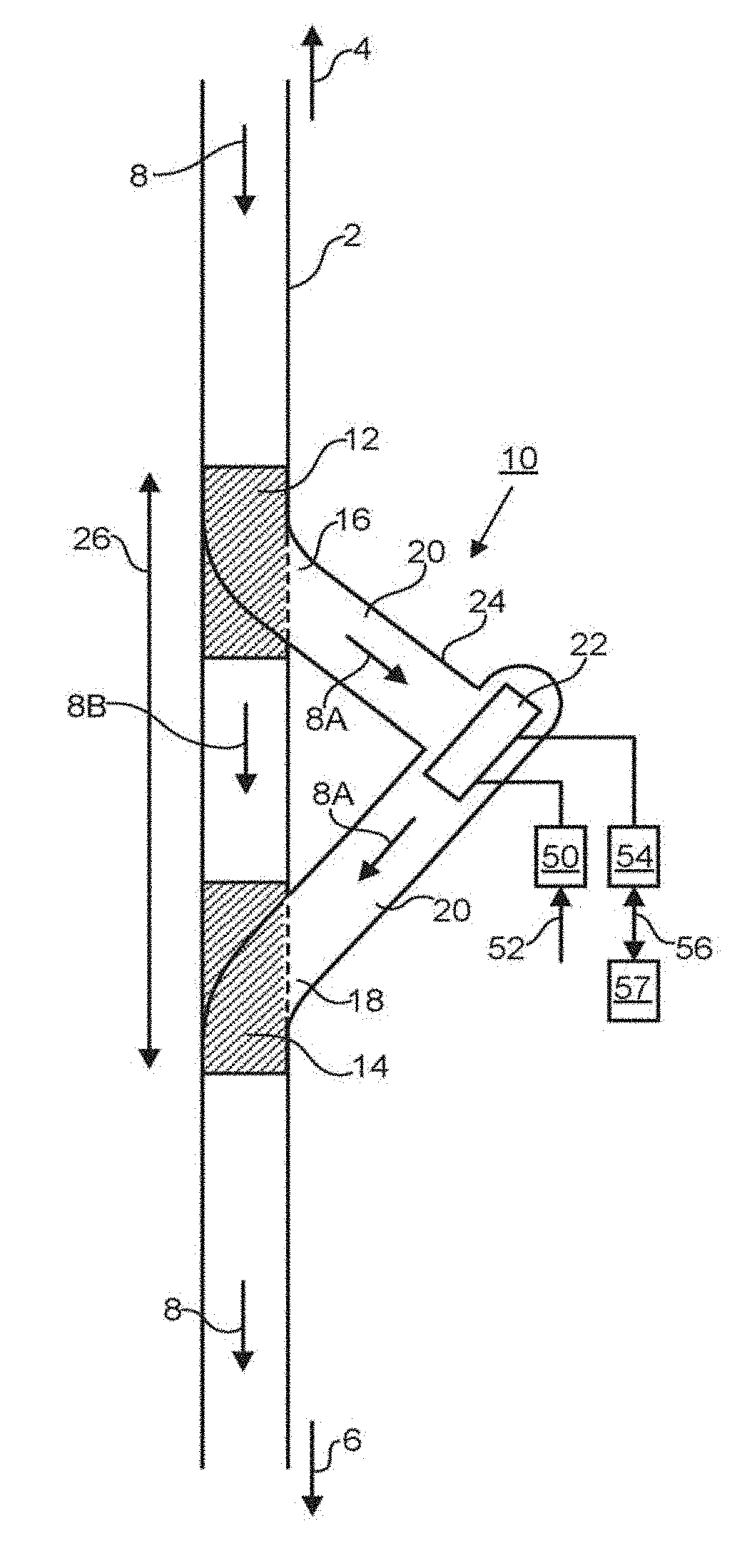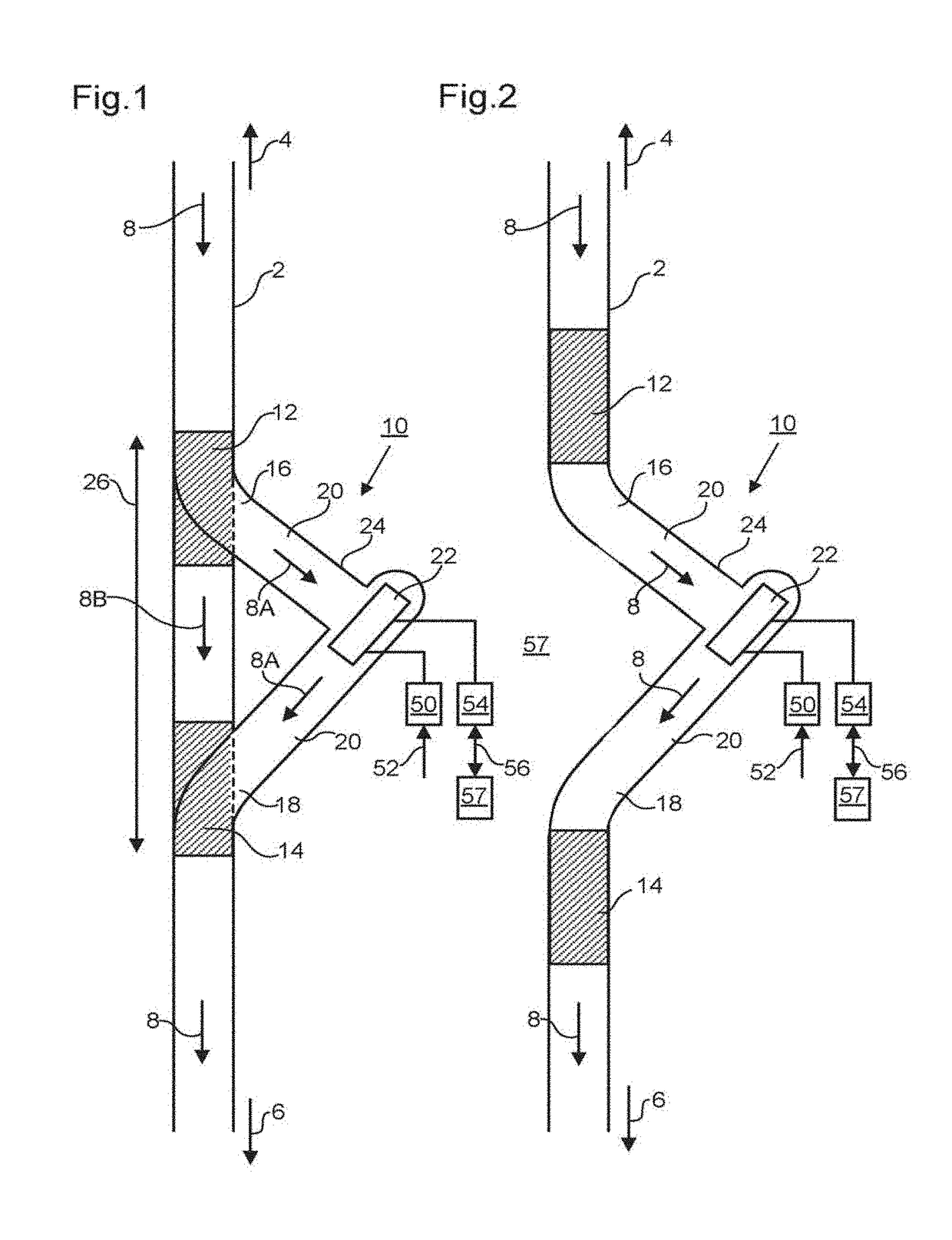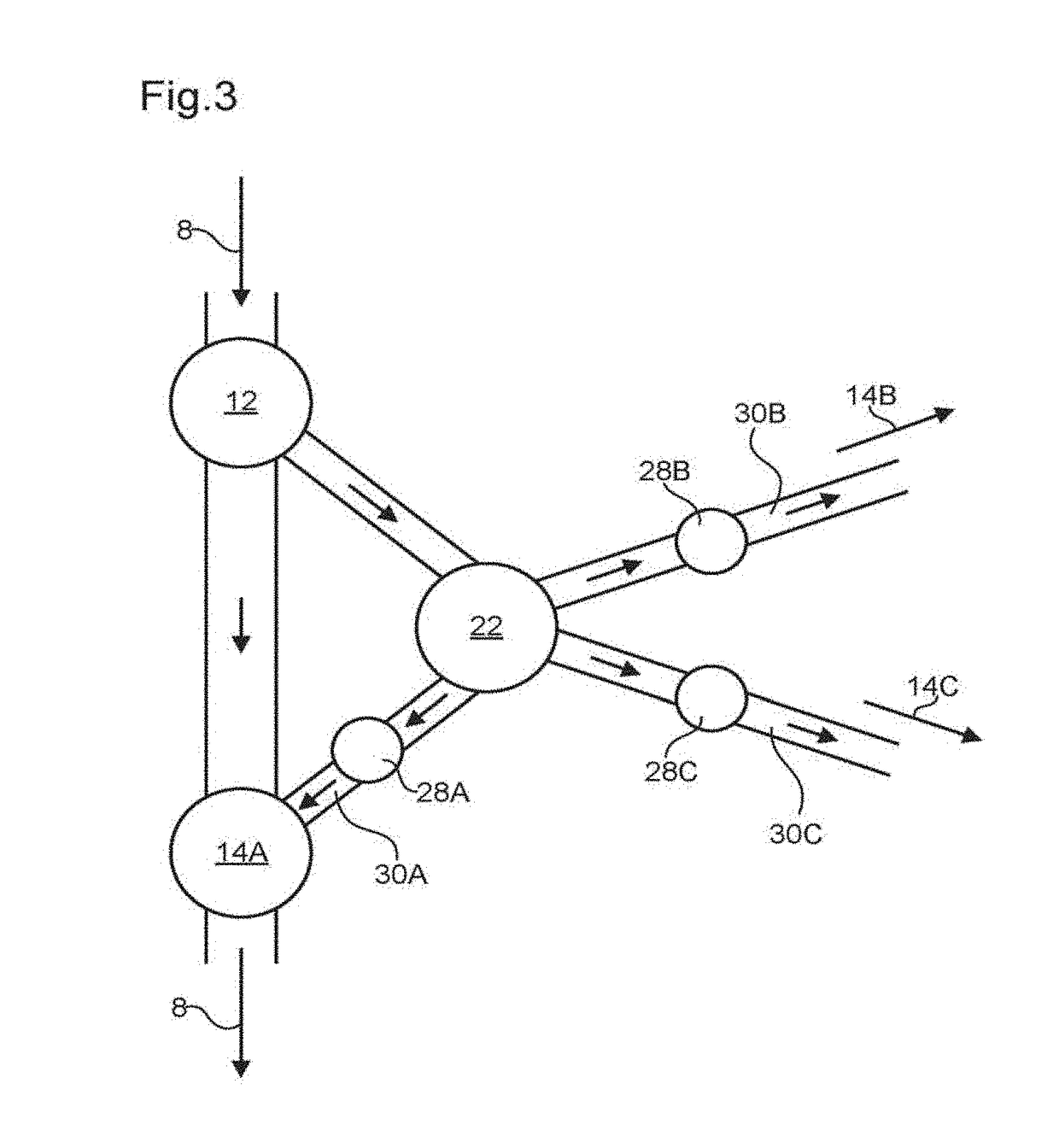Mechanical circulatory support device with centrifugal impeller designed for implantation in the descending aorta
- Summary
- Abstract
- Description
- Claims
- Application Information
AI Technical Summary
Benefits of technology
Problems solved by technology
Method used
Image
Examples
Embodiment Construction
[0050]FIG. 1 depicts a section of vasculature 2. In an embodiment, the section of vasculature 2 comprises a section of the descending aorta. In an embodiment, the section of the descending aorta is below the diaphragm (arrow 4). In an embodiment, the section of the descending aorta is upstream and / or above the renal arteries and / or splanchnic arteries (arrow 6). Blood flow is shown schematically by arrows 8, 8A and 8B.
[0051]A mechanical circulatory support 10 comprises connections into (i.e. through the wall of) the vasculature via inlet port 12 and outlet port 14. The inlet port 12 is in fluid communication with a first end 16 of a lumen 20 defined by body portion 24 of the support 10. The outlet port 14 is in fluid communication with a second end 18 of the lumen 20. A pump 22 is provided within the lumen 20 and configured for driving fluid flow in a direction away from the inlet port 12 and towards the outlet port 14.
[0052]In an embodiment, the pump 22 is a centrifugal pump. The g...
PUM
 Login to View More
Login to View More Abstract
Description
Claims
Application Information
 Login to View More
Login to View More - R&D
- Intellectual Property
- Life Sciences
- Materials
- Tech Scout
- Unparalleled Data Quality
- Higher Quality Content
- 60% Fewer Hallucinations
Browse by: Latest US Patents, China's latest patents, Technical Efficacy Thesaurus, Application Domain, Technology Topic, Popular Technical Reports.
© 2025 PatSnap. All rights reserved.Legal|Privacy policy|Modern Slavery Act Transparency Statement|Sitemap|About US| Contact US: help@patsnap.com



